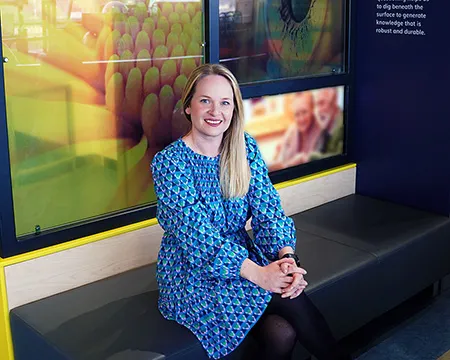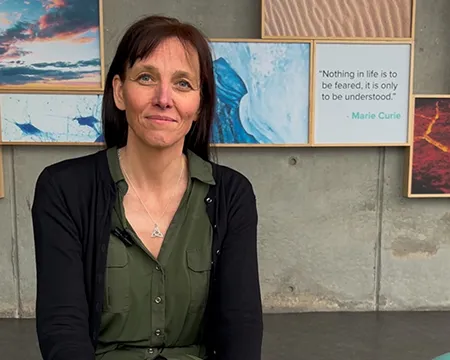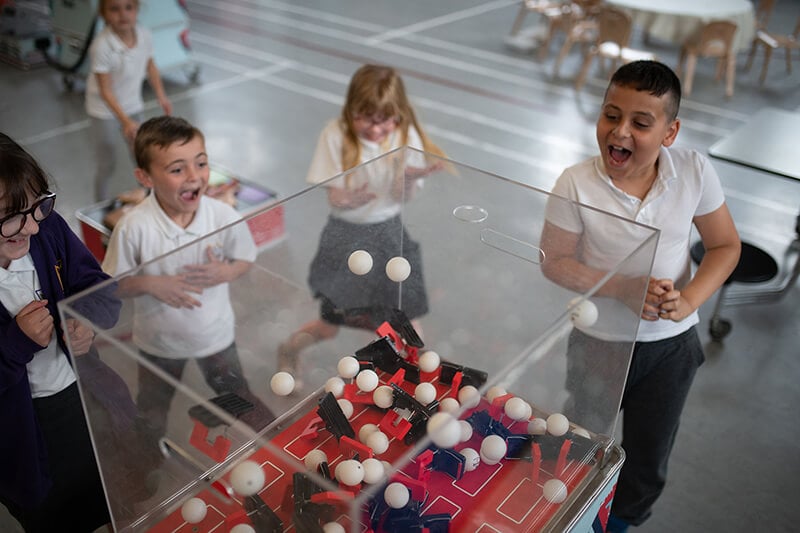Why is gender representation important?

At Glasgow Science Centre, we’re working hard to make science inclusive
If someone asked you to name a scientist, who would you say? Albert Einstein? Stephen Hawking? Isaac Newton?
A Europe-wide study revealed that a quarter of people couldn’t name a single female scientist.
There’s a variety of reasons why our minds don’t instantly go to Jane Goodall, the renowned primate scientist, or Mae C. Jemison, the first African-American female astronaut.
Perhaps the simplest reason is that, despite a huge push to inspire and engage women in all areas of Science, Technology, Engineering and Mathematics (STEM), there are still fewer women in STEM-related industries. According to UN figures, 30% of researchers worldwide are women, and only around 30 per cent of all global female students choose STEM subjects in higher education.
Not only is there a lack of female scientists in the real world, this also spills over into entertainment. The Geena Davis Institute analysed characters in popular films from across the world and found that of all the characters with an identifiable STEM job, only 12 per cent were women.
Why is the lack of fictional female scientists important? What we see on screen has a bigger impact than you might think. Television, film, advertising – they can all change how we think about something.
This goes back to very early childhood and starts from the moment we start to understand that there’s a world outside of ourselves. Psychologists have long known that babies don’t have any particular biases towards things like gender – this develops as we are exposed to things. Particularly things like the media.
That’s why it’s so important to have more diverse characters on our screens. The more common it becomes, the more normal it becomes. Young girls will see themselves represented and think ‘Hey, I could do that!’
That’s what International Day of Women and Girls in Science is all about. On Tuesday 11 February, all over the world, young girls will be able to see that there are thousands of women in STEM industries, and that science is for them.
At Glasgow Science Centre, we believe that science is for everyone, no matter their sex, race, background or identity.
It’s important that we show young girls and women, as well as young boys and men, that everyone can enjoy and be inspired by science and scientists.
Glasgow Science Centre’s team is 58% women, and it rose three % last year.
We’re proud to be able to show visitors, from early learners to life-long patrons, that there are women in science, and they do a huge range of different jobs. And they don’t all wear lab coats.
As part of Women and Girls in Science Day, we recently put out an appeal on social media, asking female scientists from across Scotland to tell us what their jobs involve.
Over 70 different women responded, all from different backgrounds and disciplines.
Download Women in Science Profiles pdf
Our followers included women who are studying the biology of the parasites that cause malaria; how birds cope with stress; different ways we can use technology to help rehabilitate stroke patients, amputees and children with cerebral palsy; the possibility of life on Mars… the list goes on and on.
Glasgow Science Centre will be showcasing these women, and many more, on our social media channels on Tuesday 11 February as part of Women and Girls in Science Day.
The main criticism of “days of” is that celebrating these achievements should not be limited to one day, and we completely agree.
That’s why we’ve chosen to continue to showcase women and girls in science long after the 11 February, sharing a profile every week.
Science is changing the world in ways we didn’t realise were possible, and to continue to make a difference, young people need to feel inspired. They also need to feel represented, and currently, there’s a huge portion of them who aren’t. We’re going to help change that.






